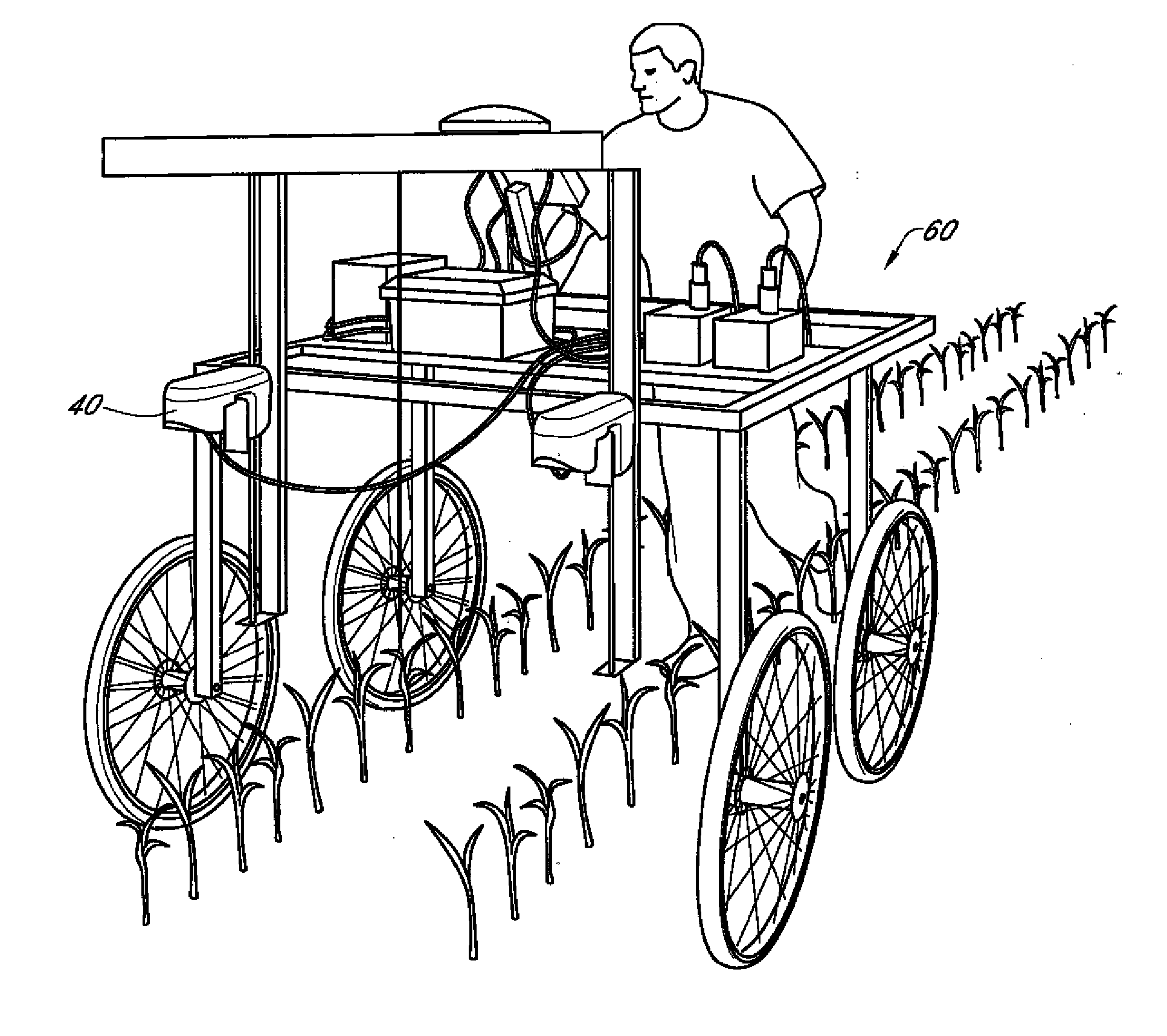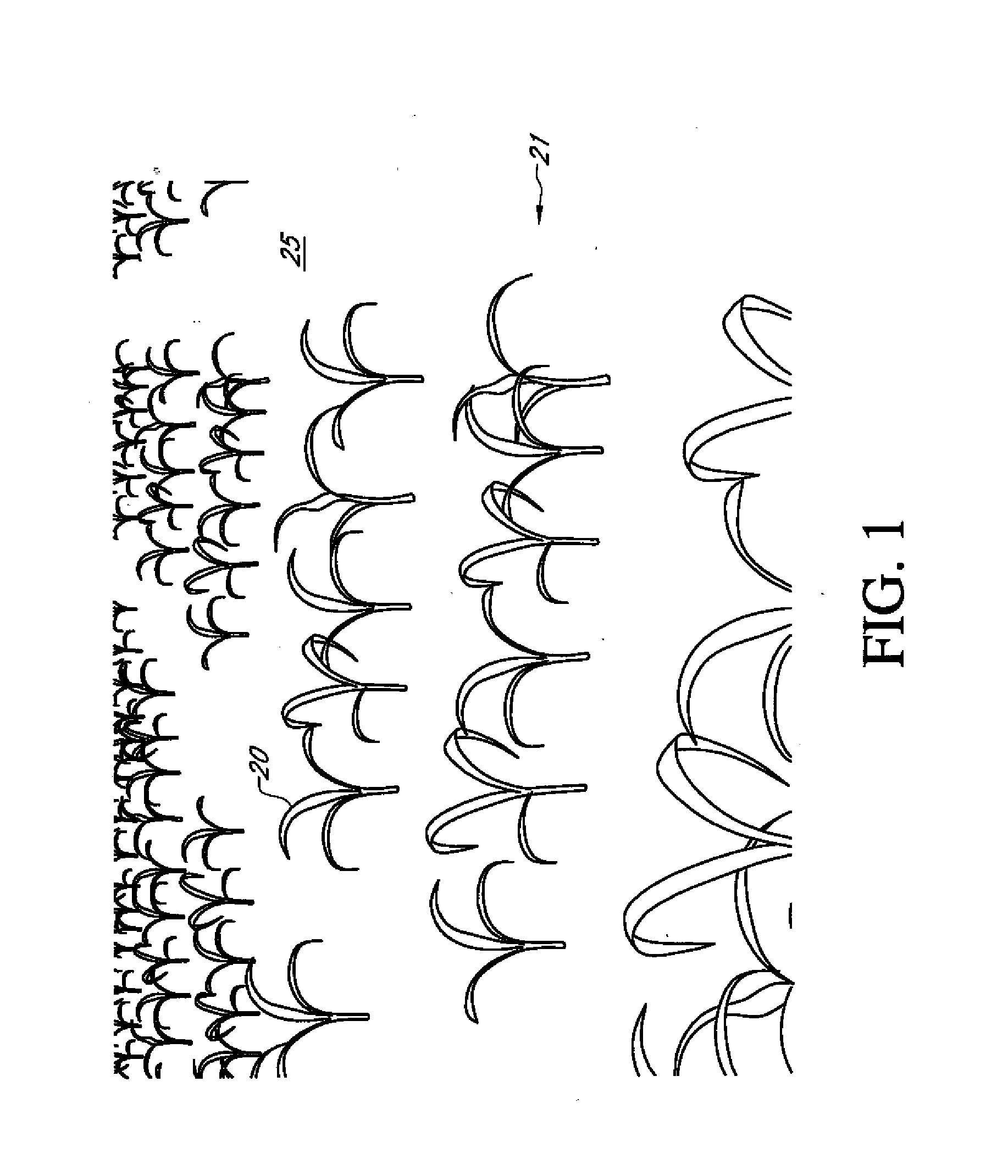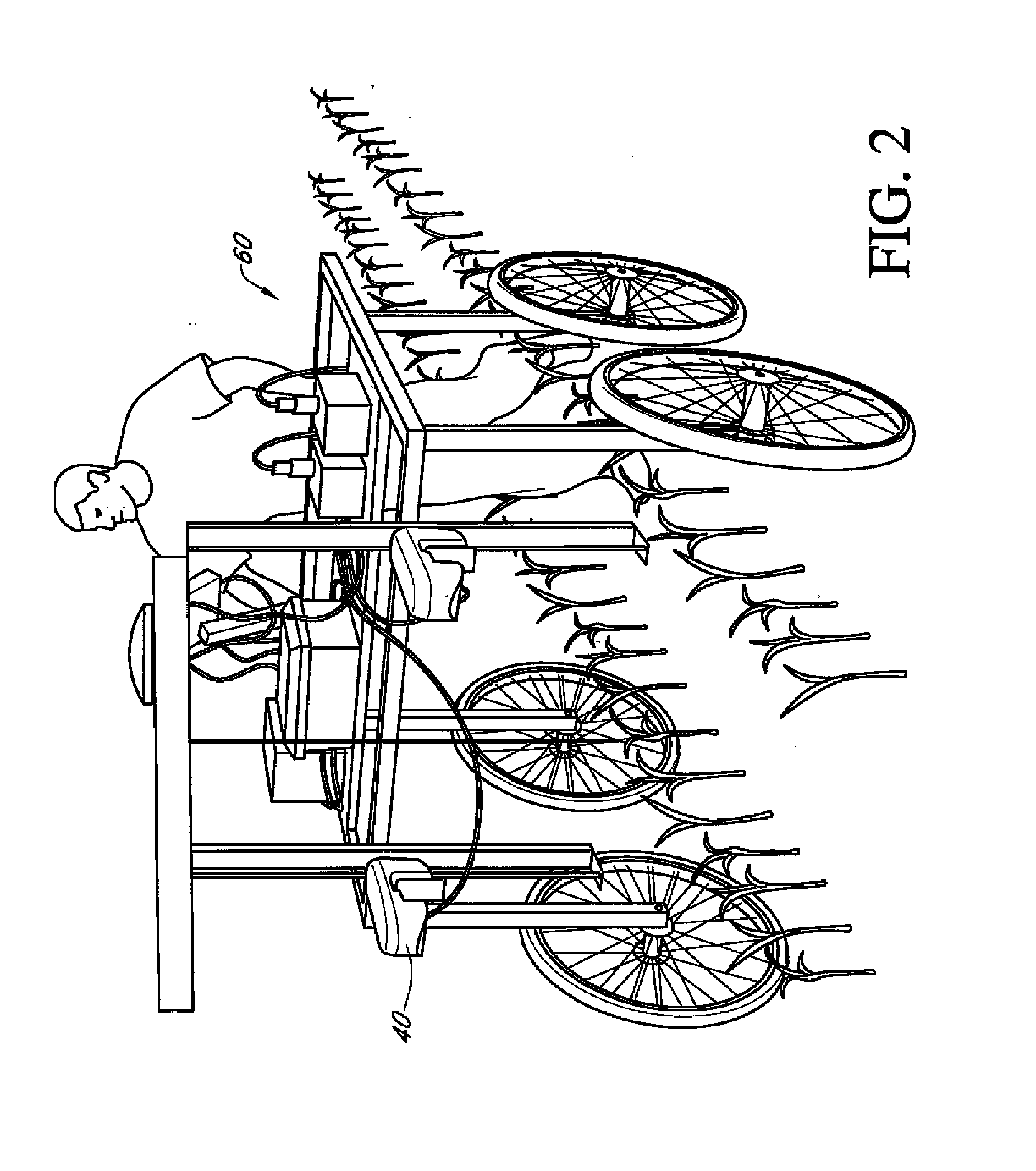Automated system for analyzing phytotoxicity
a phytotoxicity and automatic analysis technology, applied in the field of plant injury automatic analysis system, can solve the problems of variability in ratings, time-consuming and time-consuming visual ratings of field plots, and extensive measurement,
- Summary
- Abstract
- Description
- Claims
- Application Information
AI Technical Summary
Benefits of technology
Problems solved by technology
Method used
Image
Examples
example one
Evaluation of Plant Injury of Herbicide Resistant Soybean Plants
[0052]An experiment was designed to evaluate a new method of use of the system to measure the tolerance of soybean plants to various herbicide treatments and timings. A field was planted with a plurality of rows of soybeans and each of the rows was divided into a plurality of row sections. Each of the row sections was planted with soybean seed of a preselected one of the varieties.
[0053]A herbicide bicyclopyrone is a HPPD inhibiting herbicide with intended use in monocot crops, such as corn. Bicyclopyrone is the compound represented by the formula A10+B52 as presented in U.S. Pat. No. 6,838,564. The U.S. Pat. No. 6,838,564 is hereby incorporated by reference. This herbicide has known residual activity in the soil of the field. In crop rotations the next season plant is often a soybean. Soybeans that are HPPD resistant are herbicide resistant lines. The residual activity associated with HPPD-inhibiting herbicides can cau...
example two
Vegetation Indices Used to Measure Plant Condition
[0063]Ratios of specific wavelengths of reflected light correlate with the condition of the plant. NDVI (Normalized Difference Vegetation Index) is the most common one of many available indices to measure plant condition by remote sensing. NDVI can be defined as:
NDVI=(NIR−V) / (NIR+V)*100
[0064]NIR, near infrared=760−900 nm (cellular structure and mass)
[0065]V=visual, green 500−600 nm or red 600−700 nm (Photosynthetically active radiation)
[0066]Vales from −1 to 1
[0067]Low values=non vegetation
[0068]Highest values=robust vegetation
Plots with the most resistance to an herbicide of interest have uniformly high NDVI values, while plots with poorer herbicide resistance have uniformly lower NDVI values. The change in NDVI values over time provides information on how quickly a given plot is recovering from the herbicide application. High NDVI values at the time of herbicide injury are also correlated to the end of season yield of the plots bei...
example three
[0070]The system of the present invention will be used in an experiment designed to evaluate the tolerance of corn to cold temperatures at early growth stages namely at emergence and V3-V4 leaf stage. Data will be collected on plant emergence, plant vigor and plant growth.
PUM
 Login to View More
Login to View More Abstract
Description
Claims
Application Information
 Login to View More
Login to View More - R&D
- Intellectual Property
- Life Sciences
- Materials
- Tech Scout
- Unparalleled Data Quality
- Higher Quality Content
- 60% Fewer Hallucinations
Browse by: Latest US Patents, China's latest patents, Technical Efficacy Thesaurus, Application Domain, Technology Topic, Popular Technical Reports.
© 2025 PatSnap. All rights reserved.Legal|Privacy policy|Modern Slavery Act Transparency Statement|Sitemap|About US| Contact US: help@patsnap.com



